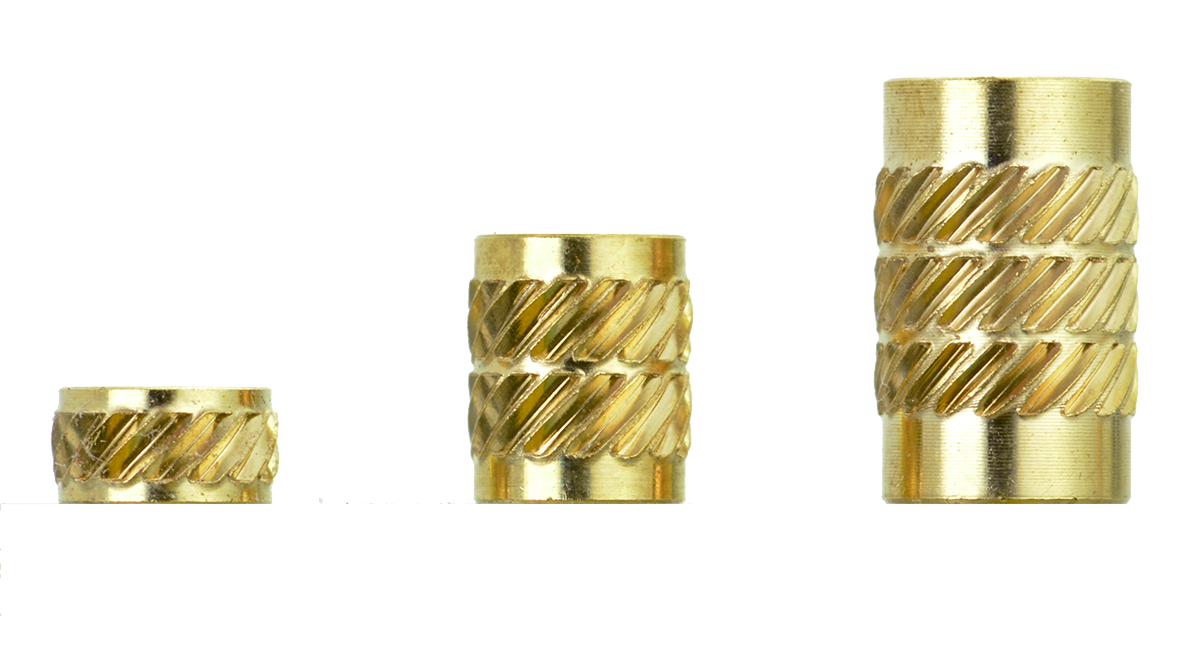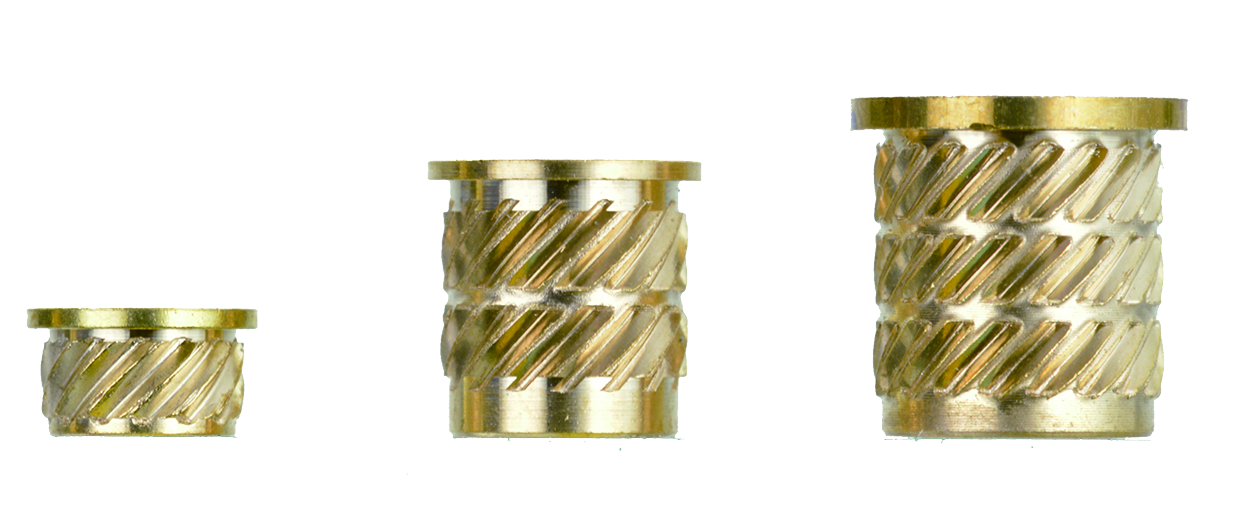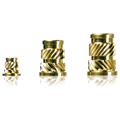Installation method of insert nut
Heat Staking Inserts
Heat Staking Inserts
| Heat Staking Inserts is a way that rely on heat to press insert nut into predrilled holes in the plastic. |
 This insert nut has knurling in the same direction diagonally and is excellent work efficiency from the symmetric design without orientation
This insert nut has knurling in the same direction diagonally and is excellent work efficiency from the symmetric design without orientationA wide variety of size selection enhances convenience.
 This insert nut provides a larger contact area for mounting objects and advantageous for locations where bolts are frequently detached such as terminals
This insert nut provides a larger contact area for mounting objects and advantageous for locations where bolts are frequently detached such as terminals
SG Lock(Heat Staking Inserts)
More Knurling in alternate directions provides high tensile and torque strengths.
Knurling in alternate directions provides high tensile and torque strengths.This most versatile insert nut has a guide on the insertion part, which supports the temporarily placed insert and ensures easy and vertical insertion.
Headed SG Lock(Heat Staking Inserts)
More This insert nut provides a larger contact area for mounting objects and advantageous for locations where bolts are frequently detached such as terminals.
This insert nut provides a larger contact area for mounting objects and advantageous for locations where bolts are frequently detached such as terminals.
Microsert(Heat Staking Inserts)
More Knurling in alternate directions provides high tensile and torque strengths.
Knurling in alternate directions provides high tensile and torque strengths.The symmetric design without orientation increases productivity and is advantageous for automatic machinery.
Web Lock(Heat Staking Inserts)
More It has a knurled shape to prevent imposing stress on plastics and is mainly used for polycarbonate materials. And, as the insert nut has left-right symmetry you do not need to worry about its direction. This will greatly increase productivity, even when using automatic machines.
It has a knurled shape to prevent imposing stress on plastics and is mainly used for polycarbonate materials. And, as the insert nut has left-right symmetry you do not need to worry about its direction. This will greatly increase productivity, even when using automatic machines.


